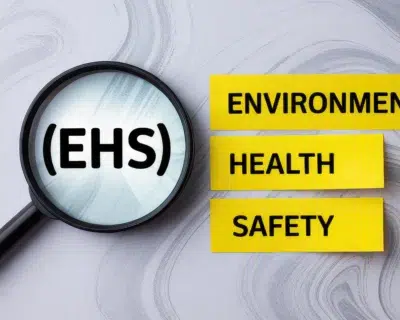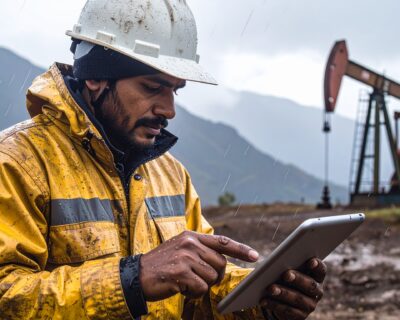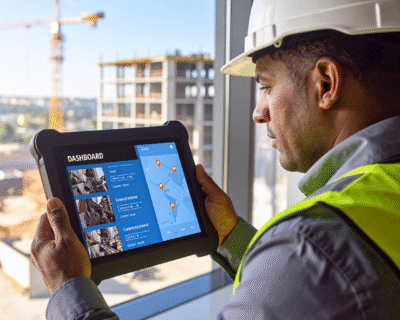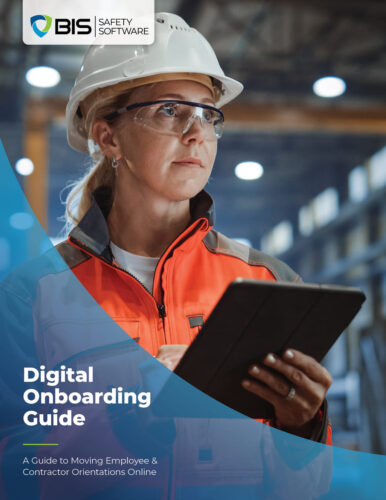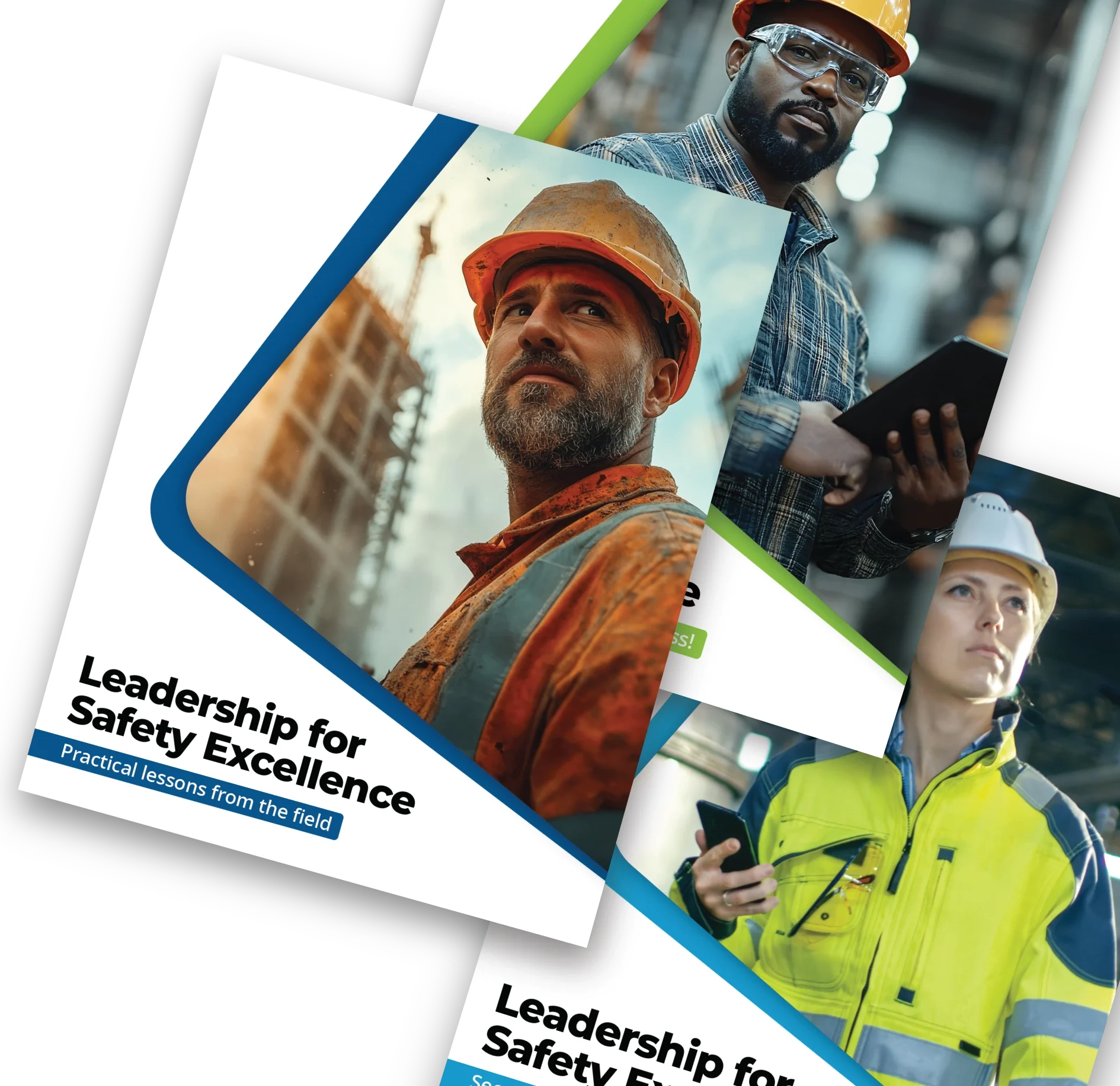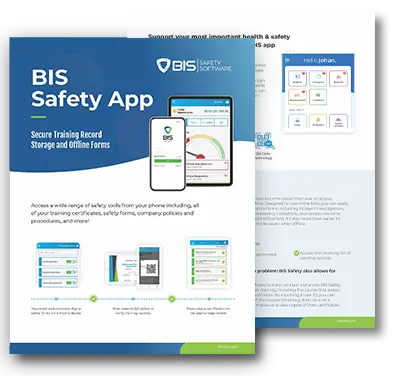
Top Ways of Reducing Windshield Time to Enhance Safety
Join us on a journey of discovery as we delve into innovative solutions designed to slash windshield time and elevate employee well-being to new heights. In today’s fast-paced world, where every moment counts, optimizing travel efficiency isn’t just about saving time—it’s about prioritizing the health and safety of your most valuable asset: your employees!
We’ll show you how remote innovation tools can be your secret weapon in keeping your team safe, no matter where their journey takes them. From cutting-edge technology to real-world examples and success stories that prove when it comes to employee well-being, we’ll explore practical strategies. Let’s seize the opportunity to make a difference for a safer tomorrow!

Risks Associated with Onsite Presence
Drivers encounter a range of challenges, including fatigue, adverse weather, isolation, navigating high-risk areas, working alone, limited access to emergency services, driving in unfamiliar and remote locations, and communication difficulties. These hazards not only pose safety risks but also result in significant financial costs for employers, with motor vehicle crashes alone costing over $72.2 billion annually according to the Network of Employers for Traffic Safety (NETS). Employer’s statistics indicate:
- The cost of work-related motor vehicle crash fatalities to employers is substantial, averaging an estimated $751,382 per fatality.
- A single incident can lead to insurance premium increases of between 20% to 40%, depending on the severity of the company’s history.
- The average cost for a crash involving an injury exceeds $75,176 per incident.
- For crashes resulting in property damage only, the average cost is $5,483.
- OSHA estimates that, on average, a work-related motor vehicle accident could cause an employee to miss approximately 42 workdays.
Mitigate Risks Through These Innovative Strategies
Given the significant financial and human tolls associated with incidents during employee drive times, there is an urgent demand for innovative solutions capable of effectively mitigating these risks and improving the safety and efficiency of workplace travel, particularly in industries where long commutes to remote locations are prevalent. Here are several examples:
Advanced Planning and Logistics:
- Utilize logistics and workforce management software to optimize scheduling and routing, ensuring the efficient transportation of employees and materials.
- Strategically plan work to minimize the need for multiple trips by grouping tasks geographically or sequentially.
- Implement maintenance optimization techniques, such as IoT for predictive maintenance, to enhance equipment reliability and minimize downtime.
- Employ route optimization and journey management tools to plan the most efficient routes, thereby reducing travel time and fuel consumption.
- Integrate real-time traffic assessment and alerts, vehicle telematics, and driver monitoring systems to proactively manage road conditions and driver behavior, ultimately enhancing safety.
- Embrace AI-driven demand forecasting to optimize resource allocation and ensure smooth and efficient operations.
Use of Technology for Real-Time Monitoring and Communication:
- Implement GPS and fleet management systems for real-time vehicle monitoring, optimizing routes, and enabling immediate response during emergencies.
- Equip field personnel with apps and devices for efficient communication and data exchange, minimizing the need for unnecessary travel.
- Utilize drones equipped with cameras for remote surveillance of construction sites, hazardous areas, or remote facilities in real-time.
- Integrate CCTV cameras for continuous remote monitoring of key areas, serving as a deterrent against unauthorized access and potential threats.
- Deploy IoT sensors for equipment and environmental monitoring, enabling remote tracking of equipment performance, temperature, and environmental conditions to detect malfunctions or hazardous situations early on.
Investment in Local Infrastructure and Accommodations:
- Collaborate with local authorities to enhance infrastructure leading to and from remote sites, thereby improving travel efficiency and safety.
- Provide temporary accommodations near worksites during peak project phases to eliminate daily commutes for employees, ultimately enhancing productivity and reducing fatigue.
Safety Training and Awareness:
- Conduct regular safety training sessions focused on defensive driving techniques and the dangers of driving while fatigued.
- Implement awareness campaigns within the company to educate employees about the risks associated with long commutes, encouraging them to take breaks and rest if feeling tired.
Health and Well-being Programs:
- Offer programs that address the physical and mental health impacts of long commutes, such as stress management workshops and physical fitness subsidies.
Remote Work and Virtual Operations:
- Implement remote work policies for positions that don’t require physical presence at the site, such as administrative roles, planning, and analysis.
- Use virtual meeting tools and cloud-based project management software to facilitate collaboration and communication among remote teams.
Flexible Scheduling:
- Introduce flexible work hours to allow employees to travel during off-peak times, reducing the risk associated with high-traffic periods.
- Implement compressed workweeks that enable employees to work longer hours but fewer days, thereby reducing the total number of commutes.
Satellite Operations Centers:
- Establish satellite offices closer to employees’ homes or in strategic locations to minimize travel distance to remote sites.
- These centers can act as bases for field operations, meetings, and equipment storage, reducing the need for frequent long-distance travel.
Carpooling and Shuttle Services:
- Encourage or organize carpooling among employees to decrease the number of vehicles on the road.
- Provide shuttle services from major pick-up points to the worksite, enhancing safety and reducing individual driving time.
Case studies
The following case studies explore real-world examples of innovative solutions aimed at minimizing windshield time and enhancing employee safety on the road.
ConocoPhillips’ Use of Drones for Site Inspections
ConocoPhillips has explored the use of unmanned aerial vehicles (UAV), or drones for conducting site inspections and monitoring infrastructure. Drones can cover vast areas quickly and provide real-time data without the need for personnel to travel extensively across sites, thereby reducing travel time and enhancing safety.
Amazon’s Last Mile Delivery Innovations
Amazon’s efforts to optimize its delivery routes and implement last-mile delivery solutions (such as drones and electric delivery vehicles) can offer insights into reducing windshield time. By optimizing routes and reducing the distance traveled by delivery personnel, Amazon aims to increase efficiency and reduce the carbon footprint of its delivery operations.
Governments Embracing Technology through Smart City Initiatives
Governments worldwide are increasingly adopting IoT technology as part of their Smart City initiatives to enhance public safety. This involves utilizing drones for monitoring forest fires, implementing auto sensors to adjust lighting levels based on citizen presence, and deploying electric self-driving shuttles that communicate with traffic signals and other transportation infrastructure through vehicle-to-vehicle data exchange.
Turner Construction’s Adoption of Virtual Reality (VR)
Turner Construction Company has integrated Virtual Reality (VR) technology for planning and client walkthroughs. This innovative approach allows project stakeholders to explore and review designs virtually, significantly reducing the need for travel to physical meetings or to visualize spaces on-site, thereby reducing windshield time.
Increasingly, construction firms are turning to prefabrication and modular construction techniques to minimize on-site work requirements. By assembling components or entire sections of a project in a controlled factory environment, companies can reduce the number of trips workers and supervisors need to make to the site. This not only cuts down on travel time but also accelerates construction timelines and improves safety by reducing on-site work.
Schlumberger’s Technological Advances for Efficiency
Schlumberger, a prominent player in the oilfield services sector, has harnessed technology to streamline its operations, diminish its carbon footprint, and limit travel requirements. Through a cloud-based solution, the company has introduced a digital twin concept empowered by AI and automation, optimizing productivity while mitigating carbon intensity. With this innovation, Schlumberger can simulate and manage field operations remotely, thereby minimizing employee windshield time.
Shell’s Embrace of Remote Monitoring and Automation
Shell has integrated remote monitoring and automation technologies into its operations to reduce onsite personnel requirements. Leveraging sensors and real-time data analytics, the company monitors equipment and infrastructure condition and performance, facilitating remote diagnosis and, in some cases, automated adjustments. This proactive approach reduces travel frequency and necessity.
Balfour Beatty’s Remote Monitoring Innovations
Balfour Beatty, a leading infrastructure group, has embraced drone technology and remote monitoring systems to oversee construction progress and conduct site inspections. This strategy diminishes the need for frequent travel between sites for project managers and safety inspectors, thereby reducing windshield time while upholding rigorous safety and quality standards.

Benefits of Reduced Onsite Presence
As illustrated by these case studies, embracing strategies to reduce onsite presence generates numerous positive outcomes for companies. Some of the advantages include:
- Enhanced employee safety: Decreased hours spent behind the wheel lead to a reduction in fatigue-related incidents, enhancing overall safety for employees.
- Operational efficiency: Companies experience lower fuel and vehicle maintenance costs, increased work time, and reduced insurance premiums, ultimately improving overall efficiency.
- Employee satisfaction and retention: By promoting improved work-life balance and job satisfaction through reduced onsite presence, companies can lower turnover rates and attract top talent who value their well-being.
- Environmental benefits: Reduced carbon footprint and decreased traffic congestion contribute to a healthier environment, aligning with corporate sustainability goals.
- Compliance and corporate responsibility: Implementing safety measures that reduce drive time ensures adherence to safety regulations, enhances corporate image, and fosters a positive reputation.
- Risk management: Technology solutions not only provide companies with additional data to monitor and manage risks but also facilitate improved communication for better crisis management.
Summary
In conclusion we’ve explored innovative solutions aimed at mitigating the risks and minimizing the hazards associated with windshield time, ensuring the safety and welfare of employees during their travels. From harnessing remote safety tools to adopting flexible work arrangements, these approaches not only bolster safety but also offer a host of benefits for companies, ranging from cost reductions to heightened employee morale and efficiency. By placing safety at the forefront and embracing innovative strategies, organizations can pave the way for a safer and more streamlined future of workplace drivetime. Let’s continue driving change and making the road a safer place for everyone!


